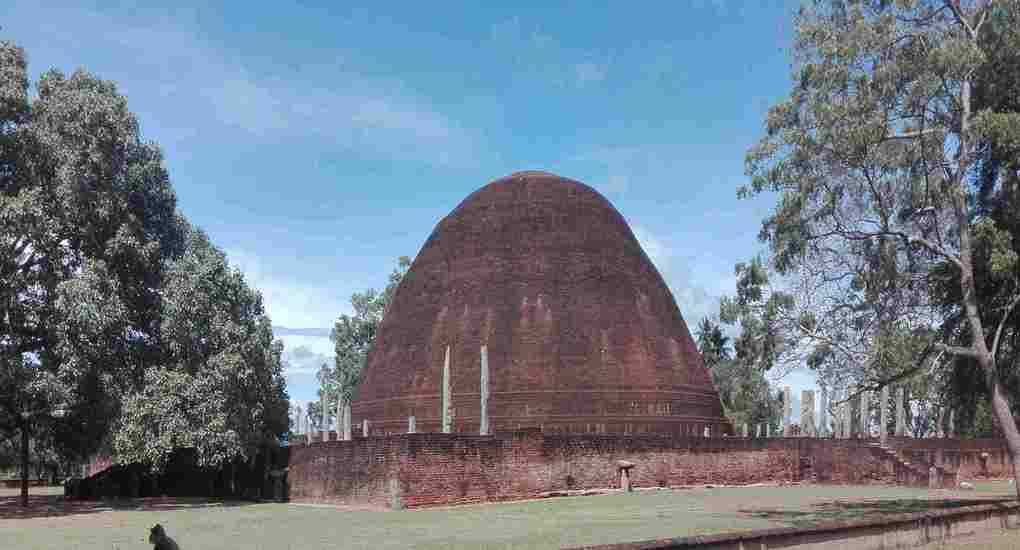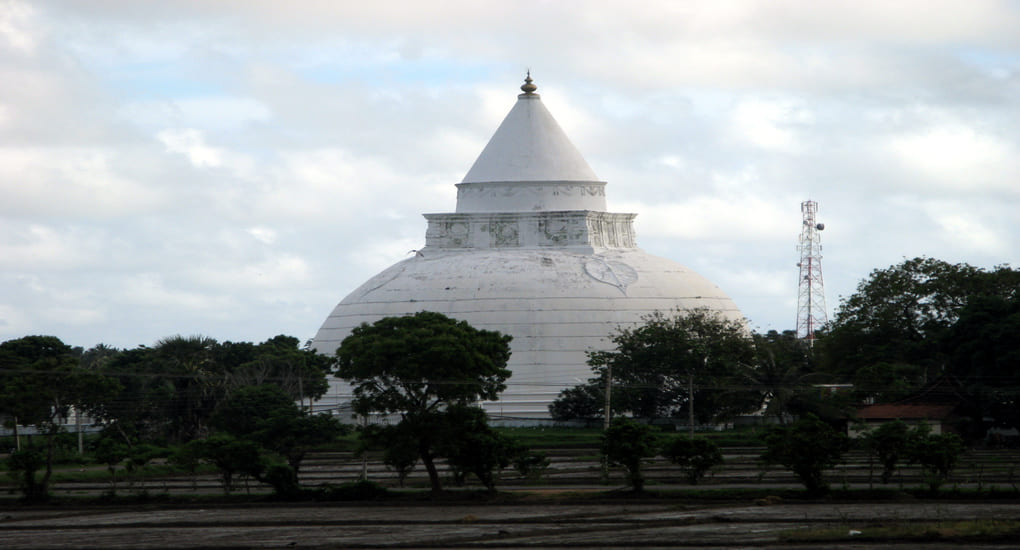Points of Interest - Culinary Delights
Dagoba
The restored Maha stupa, originally built around 200 BC by King Kavantissa, a king of Ruhunu is considered to be the impressive stupa in the 3rd century BC, located between the Tissa town centre and the tank. It is one of the sixteen most sacred sites, also known as the Solosmasthana, today, for the Buddhist pilgrims of the country. With a circumference of 165cm and height of 55.6m high, the dagoba is enshrined with the sacred relic and forehead bone of Buddha. The white stupa is attractive at night once lit up.
The statue of Queen Vihara Maha Devi, the heroine of the nation and mother of the hero of the nation, King Dutugamunu is located next to the dagoba. According to legend, Vihara Maha Devi was sent to by King Devanampiya Tissa, her father as penance after he killed a monk. Approx. 10km South of Tissa, the unharmed daughter landed at Kirinda and married the King Kavantissa. The Sinhalese hero who liberated Anuradhapura from Indian invader in the 2nd century BC, was their son King Dutugamunu.
According to the History Chronicles, around 12,000 Arahats have lived in the Tissamaharama area during the times of King Kavantissa. The Maha Dagoba, Sandagiri, Yatala Dagoba and further down about half a kilometer is the Menik Dagoba, all believed to have built by the King Mahanaga in the 3rd century BC to provide housing for the monks in Tissamaharama.
The Sandagiri Vehera dagoba located within the site is much smaller and the remains of the monastery complex dates back to around 2000 years built by King Kavantissa in the second century BC and now restored to its original glory.
Built by King Yatalatissa, Yatala Vehera is located by the Tissa-Deberawewa road, with its surrounding wall of sculpted elephant heads and moat and large moonstone are believed to have been made by chains used to tether royal elephants..
The small cluster of pillars en-route is all that remains of the Galkanumandiya, thought to be some kind of monastic building. The combination of these clusters of dagobas and the man made tanks are worth a visit and is what differentiates other town from the southern province of Sri Lanka.

